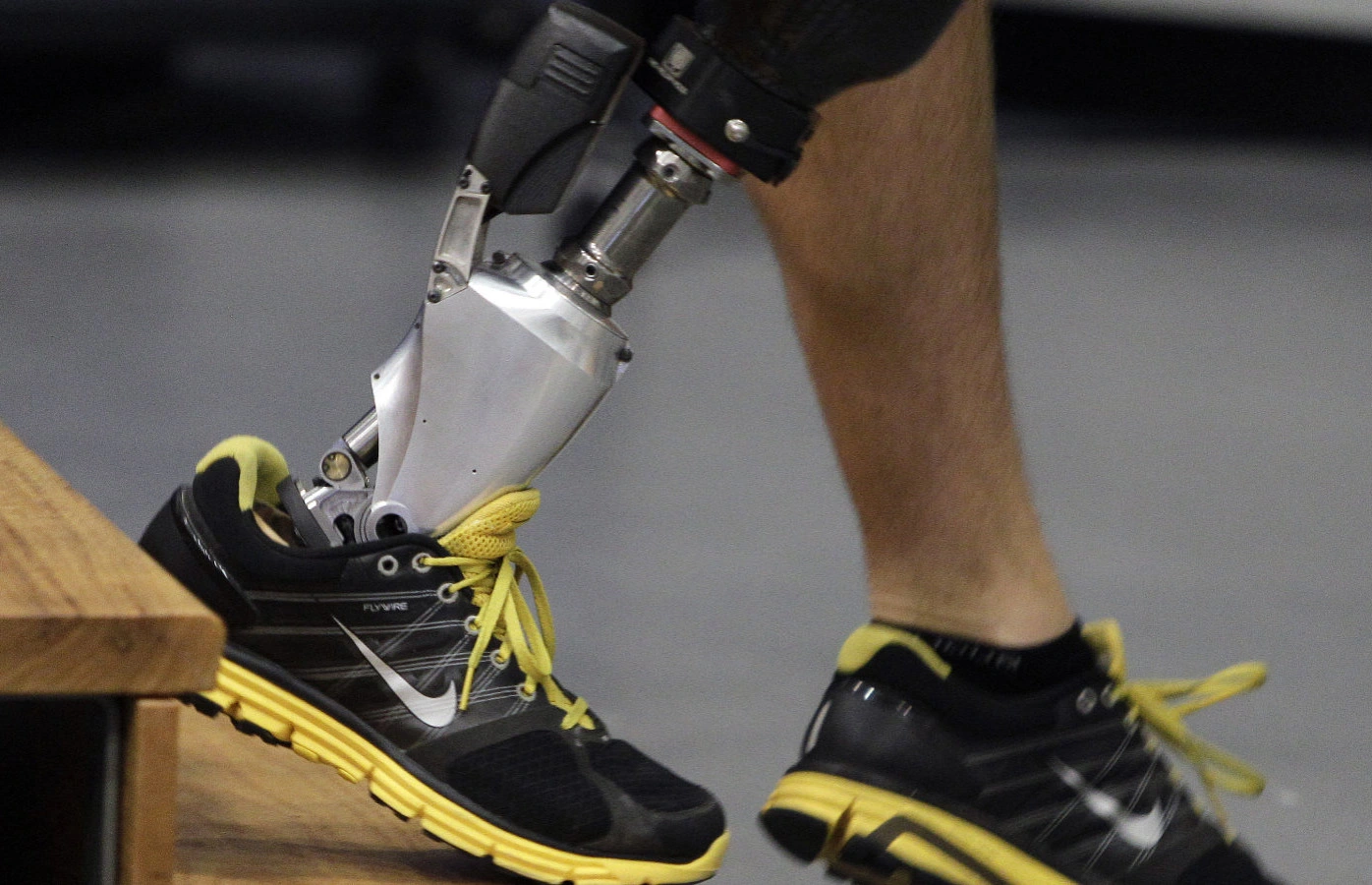Calls for Ukraine
Calls for Europe
Calls for USA

American scientists have developed an innovative bionic leg prosthesis. The new system connects directly to the user’s body — muscles and bones. This makes the prosthesis more stable and allows the person to better control their movements. Participants in the clinical study confirmed that they felt the prosthesis as part of their own body. The work was published in the journal Science.
The current level of development in medicine and technology allows people to regain the ability to use their arms or legs even when they are completely missing. Although their functionality has already reached a level where users can lead an active lifestyle without any problems, prosthetic limbs are usually perceived by users as external tools rather than part of their own body. This is not surprising: they are attached to the stump and are not connected to the user’s muscles or bones.
In traditional amputation, pairs of muscles that normally work in turn are severed: for example, antagonist muscles that pull the limb in different directions when they contract. This makes it very difficult to determine the position of the muscle and the speed of its contraction.
In recent years, scientists have been striving to make prostheses more comfortable. For example, specialists have recently developed a new surgical approach called AMI (agonist-antagonist myoneural interface), which involves doctors restoring the connection between two muscles during surgery. This allows for more precise movements with the prosthesis. Last year, a study was published in which scientists proved that people who had their legs amputated below the knee and underwent AMI surgery subsequently walked faster and navigated obstacles more successfully than people who underwent conventional surgery.
Now, the same group of researchers has proposed connecting the prosthesis to the bone. This will allow the prosthesis to read signals from muscles restored with AMI, providing better stability and feedback. To do this, specialists installed a titanium rod in the residual femur. Sixteen wires were connected to the muscles, the connection between which was restored using AMI, to read electrical signals. Scientists called this system e-OPRA. All information goes to a robotic controller, which uses this data to calculate the force needed to move the prosthesis where the user needs it.
The scientists installed such a bone-integrated prosthesis in two test subjects. They were compared with two groups: eight patients who underwent AMI surgery but did not have the e-OPRA system installed, i.e., with a conventional prosthesis, and seven patients without AMI surgery and without the e-OPRA system. All patients used an electrically powered knee prosthesis. Participants were asked to perform various tasks with the prosthesis: bend their knee at a given angle, climb stairs, and step over obstacles. In most of the tasks, patients who underwent AMI surgery and had a bone-integrated prosthesis were more successful than participants who only underwent AMI surgery and significantly more successful than users of traditional prostheses.
The test subjects were also asked questions to assess how much they felt the prosthesis was part of their body. For example, did the patients feel they had two legs or control over the prosthesis? Those participants who underwent AMI surgery and had the e-OPRA system installed felt that the prosthesis was part of their body and felt real control over it.
“A prosthesis integrated into tissue, that is, attached to bone and controlled directly by the nervous system, is not just a lifeless, separate device, but a system carefully integrated into human physiology, offering a higher level of prosthetic embodiment. It is not just a tool that a person uses, but an integral part of their personality,” said Hugh Herr of the Massachusetts Institute of Technology.
In addition, connecting the prosthesis directly to the skeleton relieves the user of a common problem — skin diseases at the point where the stump usually comes into contact with the prosthesis.
Scientists expect AMI surgery to be widely adopted and become the medical standard for above-knee amputations. Therefore, scientists plan to conduct more extensive clinical trials, which may take about five years.
Please rate the work of MedTour
